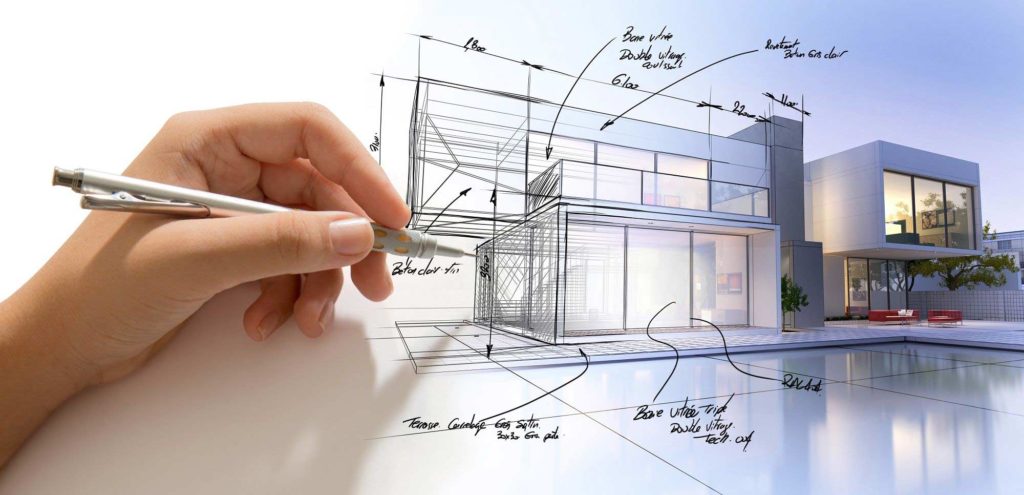Recognizing the Diverse Career Paths Available for Aspiring Architect
As a hopeful Architect, you have a world of profession courses awaiting you. Each course supplies special challenges and chances to apply your creativity and technical expertise. Whether you're attracted to typical design or the subtleties of lasting style, there's a specific niche that aligns with your rate of interests. Comprehending these diverse choices can form your expert journey, however which direction will you select to explore initially?
Standard Architecture: Designing Structures and structures
Typical design focuses on creating structures and frameworks that mix functionality with visual appeal. As you explore this area, you'll appreciate the elaborate equilibrium in between kind and objective. You'll find out to attract ideas from historical styles, including components like balance, materials, and craftsmanship. Your layouts can reflect cultural heritage, showcasing regional practices while meeting modern needs.
You'll create skills in drafting, model-making, and website analysis, allowing you to picture and communicate your concepts successfully. Involving with clients, you'll need to understand their vision and translate it into practical designs.
Additionally, developing codes and sustainability methods are important in your work, guaranteeing your frameworks are secure and eco-friendly. As you grow in your job, you'll locate chances in residential, industrial, or even repair projects, each offering unique challenges. Accepting traditional style leads the way for a satisfying career that admires the past while shaping the future.
Urban Preparation: Forming Areas and Public Spaces
As a hopeful Architect, you can play an important function as a metropolitan organizer, changing how communities operate and engage. By using community interaction methods, you'll guarantee that homeowners have a voice in shaping their atmosphere. Plus, integrating sustainable design principles will certainly assist produce rooms that not just satisfy today's needs however likewise secure the future.
Duty of Urban Planners
While numerous could assume of engineers as the single visionaries behind buildings, metropolitan planners play an essential function in forming the wider landscape of neighborhoods and public rooms. By teaming up with different stakeholders, you'll help design parks, transport systems, and domestic locations that advertise social communication and ease of access. Your competence in spatial design and area characteristics permits you to imagine future growth while maintaining social heritage.
Neighborhood Engagement Strategies
Reliable community interaction strategies are important for metropolitan coordinators to assure that the voices of citizens are listened to and valued in the preparation process. To cultivate purposeful dialogue, you ought to prioritize open discussion forums and workshops where neighborhood members can express their concepts and problems. Use studies and social media sites to reach a more comprehensive audience, making sure varied viewpoints are consisted of. Teaming up with regional companies can boost depend on and promote much deeper links. It's vital to supply clear info concerning suggested tasks and decision-making processes, allowing locals to feel educated and equipped. By proactively integrating and paying attention feedback, you'll produce spaces that show the neighborhood's requirements, eventually resulting in even more sustainable and successful metropolitan settings. Embrace transparency and constant dialogue for long-term effect.
Lasting Layout Concepts
When developing urban areas, including sustainable style concepts is essential for creating atmospheres that grow both ecologically and socially. You should start by concentrating on energy efficiency, utilizing products that lower waste and advertise recycling. Take into consideration incorporating environment-friendly areas, like parks and gardens, to enhance biodiversity and enhance air quality. Promoting walkability and public transportation can decrease dependence on automobiles, cultivating a much healthier neighborhood.
Creating with water conservation in mind is also crucial-- believe about rain gardens and absorptive surfaces to manage stormwater. Entailing area members throughout the planning procedure assurances that the spaces you develop fulfill their requirements and encourage social communication. By welcoming these concepts, you'll add to vibrant, sustainable urban landscapes that profit everybody.

Landscape Architecture: Producing Lasting Outside Settings
As you discover landscape design, you'll find vital layout concepts that produce practical and gorgeous outside rooms. Sustainable techniques play a vital role in guaranteeing these atmospheres thrive while lessening environmental influence. Plus, you'll locate a selection of job chances that enable you to make a real difference in exactly how individuals connect with nature.
Design Concepts in Landscape
Recognizing design principles in landscape design is crucial for developing lasting outdoor environments that balance with nature. You'll require to contemplate components like range, percentage, and equilibrium to assure your styles feel natural and welcoming. Including indigenous plants not only enhances biodiversity yet also decreases water usage, making your landscape resistant. Think of the flow of room and how people connect with it; paths and seating areas ought to welcome exploration and relaxation. Furthermore, take notice of seasonal adjustments, designing with products that match the surroundings year-round (Architect). By prioritizing sustainability and looks, you can create outdoor rooms that enrich the neighborhood and promote wellness. Welcoming these principles will set a solid foundation for your career in landscape design.
Lasting Practices Introduction
Lasting practices in landscape design not just focus on looks however also prioritize environmental wellness and resource conservation. You can design areas that advertise soil health and wellness, such as exercising and making use of organic products permaculture concepts. Ultimately, these methods assure your designs benefit both individuals and the atmosphere for years to come.
Job Opportunities Exploration
With a strong foundation in lasting methods, landscape style offers a variety of profession courses that enable you to make a purposeful impact on the atmosphere. You might function as a landscape developer, creating visually pleasing and useful exterior rooms, or concentrate on ecological repair, assisting to revive damaged communities. Urban organizers commonly work together with landscape designers to create eco-friendly areas in metropolitan settings, improving city livability. If you're passionate regarding education, think about becoming a landscape design teacher, inspiring future generations. Additionally, you might collaborate with nonprofits concentrated on ecological sustainability or participate in research study to innovate new practices. Each course not only shapes gorgeous environments but additionally cultivates a healthier planet for future generations.
Lasting Style: Focusing on Eco-Friendly Practices
As you discover your occupation in architecture, welcoming green methods can establish you apart in an affordable field. Lasting style concentrates on producing structures that reduce ecological influence while improving owner wellness. By including renewable products, energy-efficient systems, and sustainable structure techniques, you'll add to a greener future.
Start by getting expertise of environment-friendly certifications like LEED or BREEAM, which can bolster your qualifications. Think about how all-natural light, air flow, and thermal performance can optimize style. Team up with engineers and environmental experts to introduce services that minimize waste and preserve sources.
Don't fail to remember the importance of neighborhood participation-- interesting local stakeholders can inspire layouts that harmonize with the atmosphere. As customers significantly focus on sustainability, your expertise in environmentally friendly techniques will not only draw in jobs however additionally satisfy your interest for liable style. Embrace this essential element of the occupation, and view your profession prosper.
Historical Conservation: Shielding and Recovering Social Heritage
While you commence on your architectural trip, take into consideration the essential role of historic conservation in keeping our social heritage. This field focuses on the security and remediation of considerable buildings, sites, and structures that inform the tales of our past. By taking part in historic conservation, you'll aid secure the building tradition that forms neighborhood identity.
As a historical preservation Architect, you'll evaluate historical value and examine the condition of frameworks. You'll work closely with historians and preservationists to assure genuine remediation strategies are employed. This job course allows you to mix creativity with study, enabling you to design remedies that appreciate initial materials and workmanship.
Your work not just contributes to sustainability by recycling existing structures yet additionally promotes a feeling of satisfaction within communities. Welcoming this path will certainly assist you become a guardian of background, preserving the stories and looks that enhance our lives.
Inside Architecture: Enhancing Indoor Spaces
Historical conservation and interior style both share a commitment to improving the constructed setting, but they concentrate on various aspects. While historic conservation emphasizes preserving a structure's cultural and historical value, indoor architecture nos in on maximizing interior spaces for performance and aesthetic appeals.
As an ambitious Architect, you'll discover more info that indoor style allows you to blend creativity with technological abilities. You'll make spaces that not only look great yet likewise advertise comfort and effectiveness. This field involves comprehending exactly how light, shade, and products interact within a room, influencing state of mind and usability.
You'll deal with different jobs, from household homes to business workplaces, ensuring that each environment meets the requirements of its owners. By focusing on individual experience, you can change insides into functional and inspiring spaces, making a considerable effect on how individuals engage with their environments. Accept the chance to improve interior read more settings and form the method people live and work.
Industrial Design: Merging Performance With Visual Appeals
Industrial layout plays an essential role in developing products that seamlessly mix appearances with capability, making sure that what you utilize daily is not only visually enticing however also sensible. As an ambitious Architect, you might engage yourself in this area, focusing on designing every little thing from furnishings to customer electronic devices. Your work entails comprehending user demands, materials, and manufacturing procedures, permitting you to develop cutting-edge options that enhance day-to-day experiences.
In industrial style, you'll usually collaborate with producers, engineers, and online marketers, guaranteeing that your styles are not only stunning however likewise possible. This career path offers a vibrant setting where creative thinking satisfies functionality, making it a fulfilling choice for engineers interested in forming the items of tomorrow.
Often Asked Concerns
What Educational Credentials Do I Required to Become an Engineer?
To come to be a designer, you'll need a specialist level in design, normally a Bachelor's or Master's. Furthermore, you'll have to finish a teaching fellowship and pass the Architect Enrollment Assessment to practice legitimately.
Exist Accreditation Demands for Different Building Occupation Paths?
Yes, there're certification requirements for different architectural courses. Architect. You'll need to pass tests, total internships, and sometimes pursue specialized training, depending upon your selected emphasis, like landscape design, urban layout, or historical preservation
What Software Program Abilities Are Necessary for Designers Today?

Exactly How Can I Gain Practical Experience While Studying Style?
You can get useful experience by interning get more info at architectural companies, joining design competitors, volunteering for community tasks, or collaborating with classmates on real-world jobs. These chances enhance your abilities and develop beneficial connections in the industry.
What Task Opportunities Exist Outside Typical Design Firms?
You can discover different work chances outside traditional style firms, like city planning, interior decoration, landscape design, construction monitoring, realty advancement, and even functions in sustainability consulting. Each deals distinct obstacles and rewards.
Whether you're attracted to traditional design or the subtleties of sustainable style, there's a particular niche that aligns with your rate of interests.When designing metropolitan rooms, incorporating sustainable style concepts is crucial for producing settings that thrive both ecologically and socially.As you discover landscape architecture, you'll discover crucial style principles that create lovely and useful outside rooms.Understanding style concepts in landscape style is essential for creating sustainable outside atmospheres that balance with nature.In industrial style, you'll commonly team up with suppliers, engineers, and marketing experts, guaranteeing that your designs are not just beautiful but additionally practical.